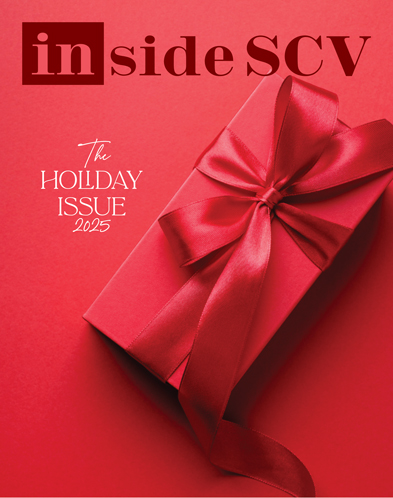FAMILY - FAMILY FEATURES
I Heart SCV
Freeway Forecasting
February, 2019 - Issue #173
"Using US Census Bureau figures, an insurer recently determined that Palmdale has the worst commute in the nation with an average round-trip over 85 minutes. Santa Claritans endure the sixth worst commute at nearly 70 minutes. There's no shortage of MISERY on these roads."
Fourteen Forecast
If you would like a convenient test to determine whether you're a sociopath, I suggest driving south on the 14 at rush hour. Look to the northbound side and you will see an endless parking lot of people heading to Canyon Country - or even worse, Antelope Valley. If you don't sense tears of sympathy welling up for their nightly plight, then you are an unfeeling monster. There's data behind this. Using US Census Bureau figures, an insurer recently determined that Palmdale has the worst commute in the nation with an average round-trip over 85 minutes.
Santa Claritans endure the sixth worst commute at nearly 70 minutes. There's no shortage of misery on these roads. Developers are appealing to commute-phobia on the 14 corridor. Vista Canyon will hug the highway, but its official website promises that it will be the SCV's first "strictly 'car-optional'" community. (Troublingly, even they put "car-optional" in quotation marks.). Meanwhile, you've probably noticed progress on The Center at Needham Ranch, which will be over 100 acres of business/industrial park. It could be your new end-of-commute instead of LA, or it could attract even more traffic. On California State Route 14, pessimists are usually right.
Five Forecast
For those who frequent the 5 more than the 14, things aren't necessarily better. The freeway has been a confusing jumble of construction, split lanes and K-rails for what has felt like a very long time. The end is now officially in sight. The I-5 rehabilitation project is scheduled for completion this summer. Caltrans has officially promised that lanes will be made safer and smoother. It may not look like much for the $171-million price tag, but any improvements are better than none. For now, the project continues and Castaic is enduring more than its fair share of the associated headaches.
Trucks will sometimes cut through the communities of the northern SCV, especially Val Verde, rather than stay on the congested freeway. Residents complain and ask for solutions. For officials, it's often easier to just hold a meeting where they dutifully listen to complaints for a couple of hours instead. The Castaic Town Council held one such meeting this January. People grumbled and vented while politicians and engineers furrowed their brows in show of concern, promising that they would do their best. But again, until the project is completed this summer, no real solutions will be had.
Between the Freeway
Perhaps Castaic residents can take some comfort in the fact that they'll get to enjoy a little more open space along their drive. Where the split between the northbound and southbound 5 freeways widens near Castaic Lake, there lies an open but otherwise unremarkable chunk of land. Some 223 acres of this land used to be owned by Neil Naidler. That's "used to" because Naidler recently donated it to the Mountains and Recreation Authority.
Naidler had originally planned to build a motorsports track and/or business park on the property, so it's probably safe to assume that he's forgoing millions of dollars in profits to keep it open. According to interviews, he was swayed by biologists who told him about how wildlife used the land to help cross past freeways to reach larger tracts of national forests. It's like a little freeway itself, just one for bobcats and deer instead of SUVs and big rigs. We think of the road as a way of getting somewhere, but we are actually living quite a lot of our life on it. If this open space dedication means glimpsing more greenery along the way, that makes it easier to heart the drive home to SCV.
|
||||||||||||||||||||||||||||




